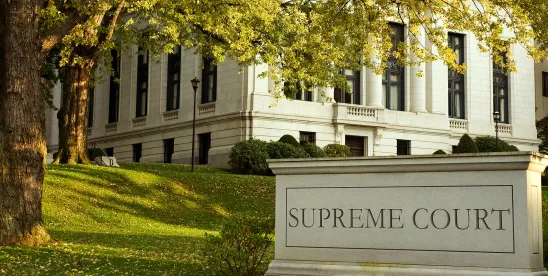The U.S. Supreme Court gave a strong signal that it will likely overturn Humphrey’s Executor v. United States, a 90-year-old case which held that Congress may restrict the President’s authority to terminate officials at independent federal agencies without cause. On July 23, 2025, the Supreme Court granted the Trump administration’s emergency application for a stay related to the appeal of decisions by a federal district court and the Fourth Circuit that resulted in the reinstatement of three terminated Democratic commissioners at the U.S. Consumer Product Safety Commission (CPSC). Those commissioners were fired without explanation by Trump in May. (We previously wrote about the CPSC litigation here and here.) The emergency application also asked the Supreme Court to define the scope of Humphrey’s Executor.
In granting the stay, Chief Justice Roberts reiterated the view of the Court’s six-member Republican majority: “The stay we issued in Wilcox reflected ‘our judgment that the Government faces greater risk of harm from an order allowing a removed officer to continue exercising the executive power than a wrongfully removed officer faces from being unable to perform her statutory duty.’” Justice Kavanaugh, concurring in the decision, wrote separately that “the better practice” would have been to grant certiorari (to review the decision of the lower court, the constitutionality of a provision of the Consumer Product Safety Act that prevents at-will removal of commissioners, and the scope of Humphrey’s Executor) before judgment. He stated: “When an emergency application turns on whether this Court will narrow or overrule a precedent, and there is at least a fair prospect (not certainty, but at least some reasonable prospect) that we will do so … if we grant a stay but do not also grant certiorari before judgment, we may leave the lower courts and affected parties with extended uncertainty and confusion about the status of the precedent in question.”
Justice Kagan, joined by Justices Sotomayor and Jackson, issued a strong dissent, stating, “By allowing the President to remove Commissioners for no reason other than their party affiliation, the majority has negated Congress’s choice of agency bipartisanship and independence. In doing so, the majority has also all but overturned Humphrey’s Executor v. United States … a near-century-old precedent of this Court.”
In a related challenge to President Trump’s firing of U.S. Federal Trade Commission (FTC) Democratic Commissioners Rebecca Slaughter and Alvaro Bedoya, on July 21, 2025, the D.C. Circuit issued a brief administrative stay of another federal district court’s order reinstating Slaughter while it considers the merits of an emergency motion by the Trump administration to stay her reinstatement pending appeal. (The district court dismissed Bedoya’s complaint as moot since Bedoya had resigned from the FTC to take employment elsewhere.)
Despite Justice Kavanaugh’s urging, for now, the Supreme Court has punted on squarely addressing Humphrey’s Executor. Nevertheless, the Supreme Court’s narrow decision in this case led to the immediate termination of the three Democratic CPSC commissioners after they were reinstated in June. The repercussions for all federal agencies legislatively authorized by Congress with similar “for-cause” removal protections will be far-reaching. The administration is expected to continue efforts to reshape all federal agencies as quickly as possible in the interim, leaving open questions of how multiple agencies might be structured and authorized in the future.






 />i
/>i

